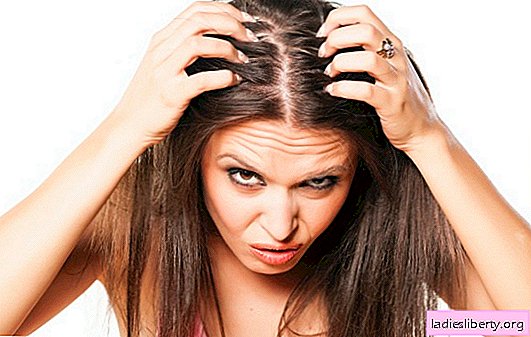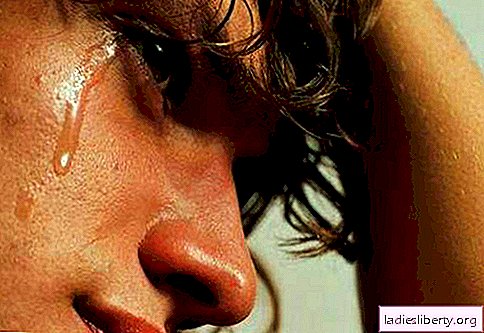
Varicose disease is a pathological expansion of superficial veins. In this case, their elongation and increase in diameter occurs, leading to various changes in venous trunks. At present, varicose veins on the legs is a very common disease. The incidence rate in women is 3 times higher than in men. This is due to the anatomical structure of the vessels, their location and pregnancy.
In recent decades, there has been a "rejuvenation" of the disease - often varicose veins on the legs, the signs of which are already pronounced, are found even in schoolchildren. WHO classifies varicose veins as a life-threatening disease, "shooting first in the legs and then in the heart," because of its deadly complications.
Varicose legs - causes
Unlike arteries, veins have valves, due to the presence of which a reverse blood flow is impossible. In case of a malfunction of these valves, with an imbalance of elastin and collagen in the body, the elasticity of the walls sharply decreases, their thinning and stretching occur. As a result, the valves and the vessels themselves can not cope with their functions, reverse blood flow occurs, stagnation develops. This is the mechanism of the formation of varicose veins.
With the formation of varicose veins on the legs, there are several reasons leading to its development.
Hereditary predisposition
This is one of the main causes of varicose veins on the legs - it is determined in 1/3 of patients with this pathology. In the presence of varicose veins in close relatives (parents, grandmothers, great-grandmothers), the probability of the onset of the disease is 70%. The hereditary factor is not a disease, but a genetically determined anatomical structure of blood vessels:
• congenital defective valves;
• insufficiently developed connective tissue of the walls of the veins.
In this regard, varicose veins on the legs, the signs of which are found to one degree or another in young people of both sexes and even in children, are so widespread.
Hormonal imbalance in the body
With varicose veins on the legs, the causes of its development are varied, but among them the most important is the hormonal imbalance that occurs when:
• pregnancy and childbirth;
• menstruation;
• menopause;
• treatment with hormones or using them in contraception.
Female sex hormones (progesterone, etc.) and their analogues cause collagen destruction in the walls of veins. This significantly reduces their tone.
Genital inflammation
Inflammation in the pelvic organs leads to hormonal disorders and changes in blood flow in the small veins. As a result, a message appears between the veins and arteries, the volume and blood pressure in the veins increase. They expand, the valves do not withstand the reverse flow of blood, varicose nodes appear.
Nervous disorders
The tone of all vessels is regulated by nerve endings. If, under certain influences (stress, depression, neurosis, etc.), a disturbance in the nervous regulation occurs, the venous tone decreases, and the diameter of the vessels increases.
Physical overload leads to increased pressure in the veins. With large static loads (excess body weight, weight transfer, pregnancy and childbirth, prolonged stay on the legs without movement), the pressure in the veins increases significantly. The risk group includes sellers, teachers, hairdressers, movers.
Sedentary lifestyle or work
The scourge of modern life is "computer varicose veins." The leg muscles are a kind of "pump": when they are reduced, venous blood moves up faster. In the sitting position, the muscles do not contract, except tog — the veins are compressed, their tone decreases, and blood circulation is disturbed.
An increase in intra-abdominal pressure leads to high pressure in the veins of the legs, which disrupts the valves. This occurs with prolonged constipation, sneezing, coughing.
Reduced immunity, injuries can lead to the development of varicose veins on the legs. Gender plays a role. Due to the genetic predisposition in women, varicose veins on the legs, the signs of which can be expressed to varying degrees, are much more common than in men. Men go to the doctor when dangerous complications occur and it is no longer possible to do without surgical treatment.
Varicose legs - the first symptoms
With varicose veins on the legs, the first symptoms with which the disease begins may be mild and do not immediately attract attention. These include:
• a thin vascular network of crimson - blue color;
• pain, fatigue, burning sensation or itching in the legs in the evening;
• numbness or convulsive muscle contractions at night.
As the changes in the venous vessels progress with varicose veins on the legs, the first the symptoms of the disease are aggravated, and there are more complaints:
• the skin in places of varicose veins on the legs thickens, peels, becomes covered with cyanotic spots;
• pain in the calf muscles becomes permanent, worse when walking;
• venous nodes appear, which are accompanied by pain during palpation.
Subsequently, with varicose veins on the legs, the signs of the disease intensify and edema appears. They are a signal that the veins are not coping with their function. This period is dangerous for complications that can lead to death:
• thrombophlebitis;
• thromboembolism;
• trophic ulcers;
• bleeding that can occur from a small stroke, it is difficult to stop it.
Therefore, varicose veins on the legs, the signs of which are growing, must be treated on time due to possible complications. Thrombophlebitis (inflammation of the inner walls of the veins) contributes to the formation of blood clots, which can block the blood flow in the vessel (phlebothrombosis), or, coming off, get into the lungs with blood flow (thromboembolism), which can end fatally.
In order to avoid fatal complications, a timely visit to a phlebologist (angiosurgeon) and a check of blood coagulation are necessary.
Varicose veins - treatment
When symptoms of varicose veins on the legs appear, treatment should begin immediately. Currently, medicine has achieved significant success in the treatment of this pathology.
If the first signs of varicose veins on the legs are detected, treatment is still possible without surgery and consists of several procedures:
1. Medication: prescribed, depending on the state of the vessels (after the examination of the vessels by ultrasound or contrast venography), venotonics, NSAIDs, anticoagulants. Perhaps the use of drugs of these groups locally in the form of gels, ointments, creams.
The main role in the treatment of varicose veins is played by therapy aimed at restoring the tone of the venous walls, for example, using the drug Phlebof. This is a modern highly purified preparation of diosmin, the only one among domestic products without a film coating, dyes and preservatives, so that the active substance is absorbed as quickly as possible, and the likelihood of allergic reactions is minimized.
2. Compression treatment: wearing special stockings, golfs, in extreme cases - the use of elastic bandages.
3. Pneumomassage - improves tissue nutrition, improves venous blood flow.
4. Sclerotherapy - the introduction of special drugs into a vein, blocking the blood flow through it. A gradual atrophy of the vessel occurs, it disappears.
5. Laser coagulation of blood vessels - the most modern method. It is carried out under anesthesia, a positive result occurs in a month.
Varicose veins on the feet - prevention
With varicose veins on the legs, the prevention of the disease in the broad sense consists of three rules:
1. Walking is better than standing.
2. Sitting is better than standing.
3. Lying is better than sitting.
In order for the veins to function normally, the leg muscles must contract. Or the legs should be in a horizontal elevated position with straight knees.
If a person is forced to stand or sit for a long time, he is at high risk. For good venous blood circulation, there should be contractions in the muscles of the legs and heart. Therefore, with varicose veins on the legs, prevention is an active lifestyle, including, if possible:
• walking at a fast pace;
• swimming;
• cycling.
Physical activity should not be long and exhausting.
When standing for a long time - “shift” from foot to foot, move your toes.
Preventive measures for prolonged sitting:
• periodically raise your legs to the table or to the level of the heart to improve the outflow of blood:
• you can put your feet on a stand and with an effort to raise your toes several times - this will reduce venous pressure;
• a break of 10 minutes for walking or warming up legs after each hour of sitting;
• in all cases of physical exertion (training, running, exercising on the simulator), as well as during pregnancy, before flying on an airplane, when traveling for a long time by car, it is necessary to use compression knitwear.
Contraindicated with varicose veins in the legs:
• overeating, eating a large amount of spicy, salty, fatty;
• alcohol, smoking;
• excess weight;
• lifting and carrying heavy loads;
• hot baths for more than 10 minutes with temperatures above 36.70 ° C, saunas, baths, solariums;
• warming up procedures;
• taking hormonal drugs, including birth control;
• the heel is more than 4 cm (the muscles of the lower leg begin to partially contract, which leads to impaired venous circulation).
Do not self-medicate. At the first signs of varicose veins, it is necessary to consult a doctor and begin timely treatment - this will help to avoid serious complications.











